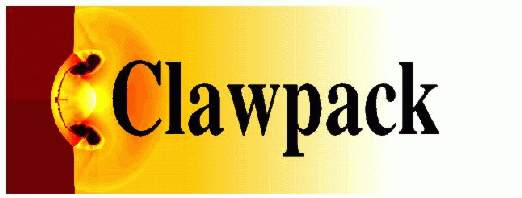|
setrun.py.html |
 |
|
Source file: setrun.py
|
|
Directory: /Users/rjl/git/clawpack/classic/examples/acoustics_1d_example1
|
|
Converted: Wed Dec 28 2016 at 22:28:08
using clawcode2html
|
|
This documentation file will
not reflect any later changes in the source file.
|
"""
Module to set up run time parameters for Clawpack -- classic code.
The values set in the function setrun are then written out to data files
that will be read in by the Fortran code.
"""
from __future__ import absolute_import
import os
import numpy as np
#------------------------------
def setrun(claw_pkg='classic'):
#------------------------------
"""
Define the parameters used for running Clawpack.
INPUT:
claw_pkg expected to be "classic" for this setrun.
OUTPUT:
rundata - object of class ClawRunData
"""
from clawpack.clawutil import data
assert claw_pkg.lower() == 'classic', "Expected claw_pkg = 'classic'"
num_dim = 1
rundata = data.ClawRunData(claw_pkg, num_dim)
#------------------------------------------------------------------
# Problem-specific parameters to be written to setprob.data:
#------------------------------------------------------------------
probdata = rundata.new_UserData(name='probdata', fname='setprob.data')
probdata.add_param('rho', 1.0, 'density of medium')
probdata.add_param('K', 4.0, 'bulk modulus')
probdata.add_param('beta', 200., 'Gaussian width parameter')
#------------------------------------------------------------------
# Standard Clawpack parameters to be written to claw.data:
#------------------------------------------------------------------
clawdata = rundata.clawdata # initialized when rundata instantiated
# ---------------
# Spatial domain:
# ---------------
# Number of space dimensions:
clawdata.num_dim = num_dim
# Lower and upper edge of computational domain:
clawdata.lower[0] = -1.000000e+00 # xlower
clawdata.upper[0] = 1.000000e+00 # xupper
# Number of grid cells:
clawdata.num_cells[0] = 400 # mx
# ---------------
# Size of system:
# ---------------
# Number of equations in the system:
clawdata.num_eqn = 2
# Number of auxiliary variables in the aux array (initialized in setaux)
clawdata.num_aux = 0
# Index of aux array corresponding to capacity function, if there is one:
clawdata.capa_index = 0
# -------------
# Initial time:
# -------------
clawdata.t0 = 0.000000
# Restart from checkpoint file of a previous run?
# If restarting, t0 above should be from original run, and the
# restart_file 'fort.qNNNN' specified below should be in
# the OUTDIR indicated in Makefile.
clawdata.restart = False # True to restart from prior results
clawdata.restart_file = 'fort.q0006' # File to use for restart data
# -------------
# Output times:
#--------------
# Specify at what times the results should be written to fort.q files.
# Note that the time integration stops after the final output time.
clawdata.output_style = 1
if clawdata.output_style==1:
# Output ntimes frames at equally spaced times up to tfinal:
# Can specify num_output_times = 0 for no output
clawdata.num_output_times = 16
clawdata.tfinal = 0.800000
clawdata.output_t0 = True # output at initial (or restart) time?
elif clawdata.output_style == 2:
# Specify a list or numpy array of output times:
# Include t0 if you want output at the initial time.
clawdata.output_times = [0., 0.1]
elif clawdata.output_style == 3:
# Output every step_interval timesteps over total_steps timesteps:
clawdata.output_step_interval = 2
clawdata.total_steps = 4
clawdata.output_t0 = True # output at initial (or restart) time?
clawdata.output_format = 'ascii' # 'ascii', 'binary', 'netcdf'
clawdata.output_q_components = 'all' # could be list such as [True,True]
clawdata.output_aux_components = 'none' # could be list
clawdata.output_aux_onlyonce = True # output aux arrays only at t0
# ---------------------------------------------------
# Verbosity of messages to screen during integration:
# ---------------------------------------------------
# The current t, dt, and cfl will be printed every time step
# at AMR levels <= verbosity. Set verbosity = 0 for no printing.
# (E.g. verbosity == 2 means print only on levels 1 and 2.)
clawdata.verbosity = 0
# --------------
# Time stepping:
# --------------
# if dt_variable==True: variable time steps used based on cfl_desired,
# if dt_variable==False: fixed time steps dt = dt_initial always used.
clawdata.dt_variable = True
# Initial time step for variable dt.
# (If dt_variable==0 then dt=dt_initial for all steps)
clawdata.dt_initial = 1.000000e-01
# Max time step to be allowed if variable dt used:
clawdata.dt_max = 1.000000e+99
# Desired Courant number if variable dt used
clawdata.cfl_desired = 0.900000
# max Courant number to allow without retaking step with a smaller dt:
clawdata.cfl_max = 1.000000
# Maximum number of time steps to allow between output times:
clawdata.steps_max = 500
# ------------------
# Method to be used:
# ------------------
# Order of accuracy: 1 => Godunov, 2 => Lax-Wendroff plus limiters
clawdata.order = 2
# Number of waves in the Riemann solution:
clawdata.num_waves = 2
# List of limiters to use for each wave family:
# Required: len(limiter) == num_waves
# Some options:
# 0 or 'none' ==> no limiter (Lax-Wendroff)
# 1 or 'minmod' ==> minmod
# 2 or 'superbee' ==> superbee
# 3 or 'vanleer' ==> van Leer
# 4 or 'mc' ==> MC limiter
clawdata.limiter = ['mc', 'mc']
clawdata.use_fwaves = False # True ==> use f-wave version of algorithms
# Source terms splitting:
# src_split == 0 or 'none' ==> no source term (src routine never called)
# src_split == 1 or 'godunov' ==> Godunov (1st order) splitting used,
# src_split == 2 or 'strang' ==> Strang (2nd order) splitting used, not recommended.
clawdata.source_split = 0
# --------------------
# Boundary conditions:
# --------------------
# Number of ghost cells (usually 2)
clawdata.num_ghost = 2
# Choice of BCs at xlower and xupper:
# 0 or 'user' => user specified (must modify bcNamr.f to use this option)
# 1 or 'extrap' => extrapolation (non-reflecting outflow)
# 2 or 'periodic' => periodic (must specify this at both boundaries)
# 3 or 'wall' => solid wall for systems where q(2) is normal velocity
clawdata.bc_lower[0] = 'extrap' # at xlower
clawdata.bc_upper[0] = 'extrap' # at xupper
return rundata
# end of function setrun
# ----------------------
if __name__ == '__main__':
# Set up run-time parameters and write all data files.
import sys
rundata = setrun(*sys.argv[1:])
rundata.write()

